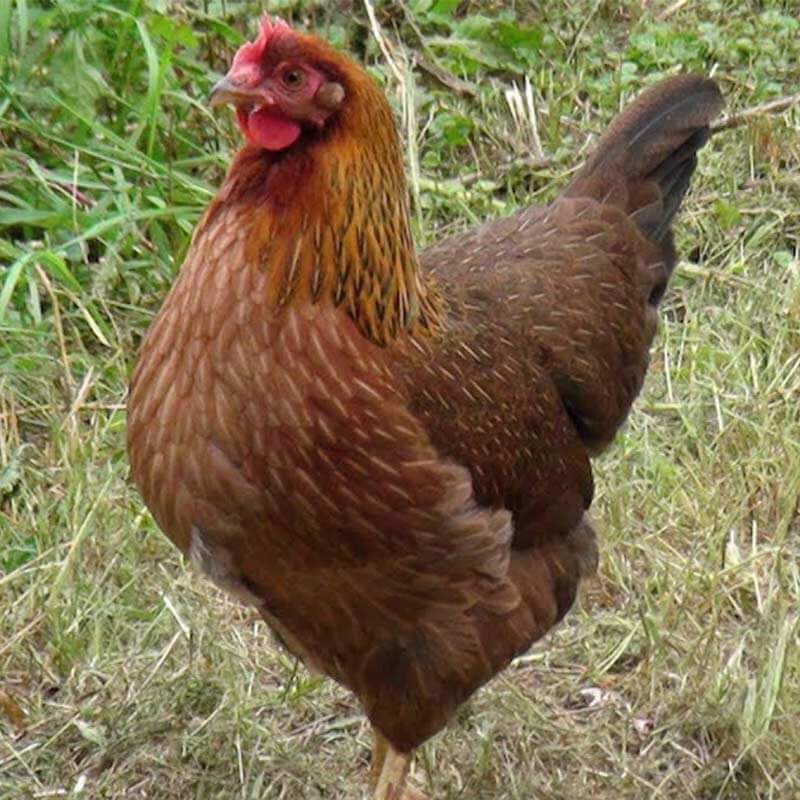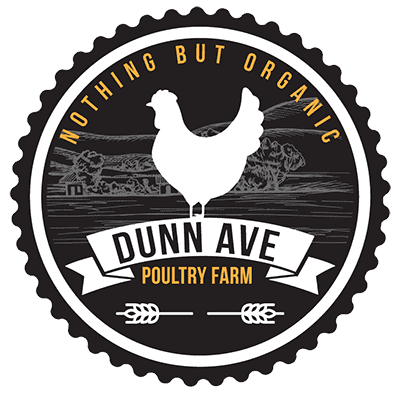Chicken Breeds
Check out the many chicken breeds available in our farm.
Rhode Island Red
The Rhode Island Red (RIR) is one of the most common backyard chickens. It was developed in Massachusetts in the late nineteenth century. By selective breeding between the Oriental Origin such as a Malay and Italian Leghorn it became the Rhode Island state bird. The Rhode Island Red is simple to take care of because they are scavengers with a substantial egg production. RIR’s are generally very healthy and are not known for any hereditary health concerns.
Primary Use
Dual Purpose – Meat & Eggs
Annual Egg Production
200 – 300
Egg Size
Large
Egg Color
Brown
Temperament
Hardy
Recognized Variety
Single Comb, Rose Comb
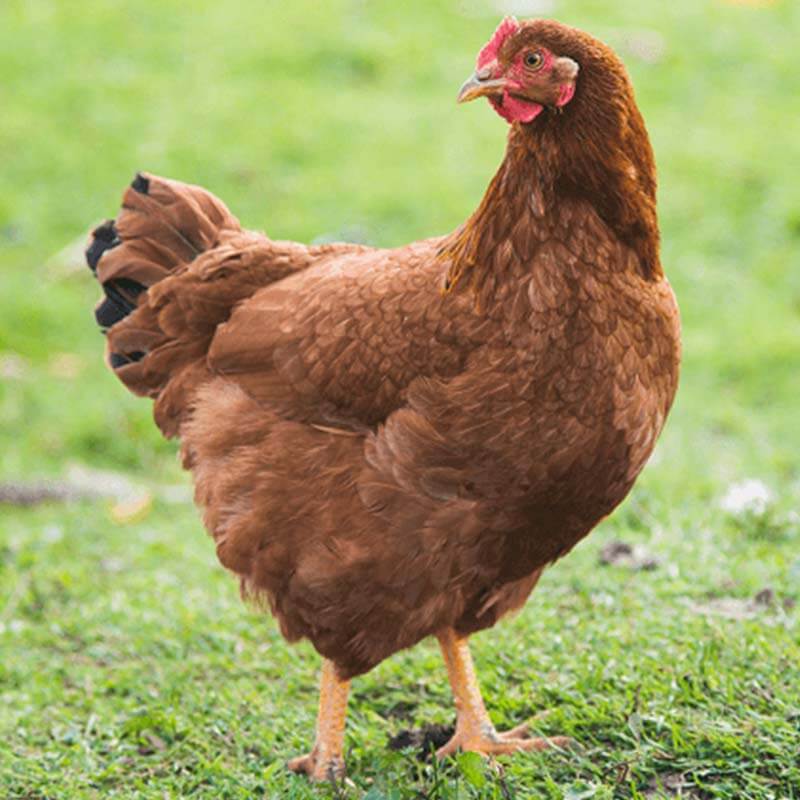
Leghorn
The Leghorn chicken originated in Northern Italy. Leghorns are highly active and hardworking birds. Compared to others, the Leghorns are small in size and appetite but have excellent laying ability. Since being small in stature they were cross bred with a Minorca chicken to increase the breed’s size. In doing this the Leghorns came back to America to help fuel the transition of farm fowl to commercial poultry industry. In today’s world the majority of Leghorns are of the industrial type and dominate white egg production in America.
Primary Use
Eggs
Annual Egg Production
200 – 300
Egg Size
Large
Egg Color
White
Temperament
Nervous, Flighty
Recognized Variety
Single Comb, Rose Comb
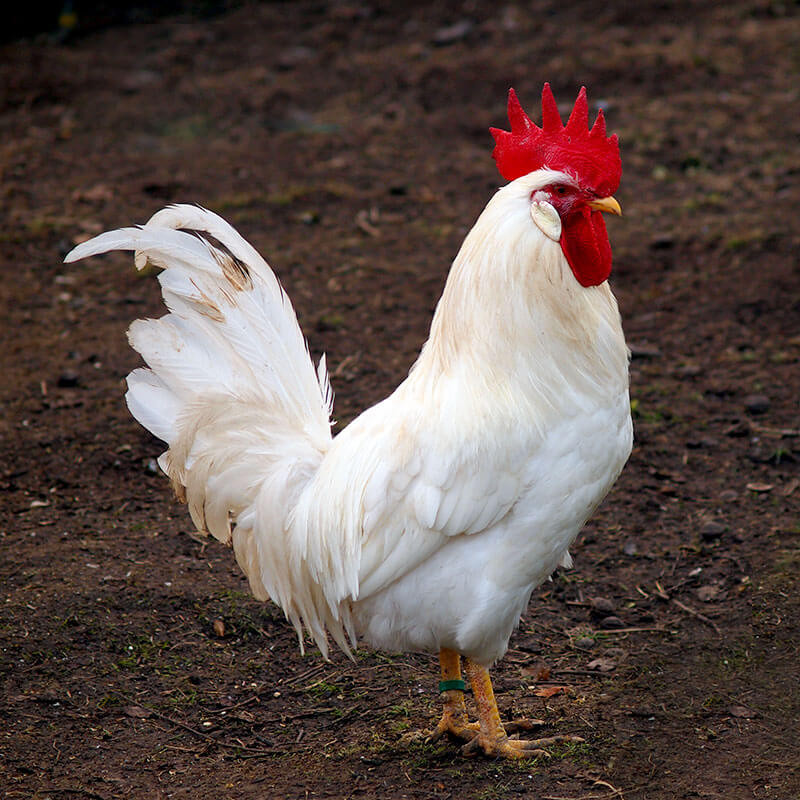
Plymouth Rock
The Plymouth Rock was developed in America in the late nineteenth century. It became popular very rapidly because of is dual production. Until World War II, no breed was ever kept and bred as extensively as the Barred Plymouth Rock. The Barred Plymouth Rock was one of the foundation breeds for the broiler industry in the 1920’s. Plymouth Rocks are not extremely aggressive, and are easy to domesticate.
Primary Use
Dual Purpose – Meat & Eggs
Annual Egg Production
200 – 300
Egg Size
Large
Egg Color
Brown/Light Brown
Temperament
Calm
Recognized Variety
Barred, Black Frizzle, Buff, Partridge, Blue, Columbian, Silver Penciled

Jersey Giant
The Jersey Giant developed in the 1870’s and was originally called the Jersey Black Giant. Being bred with Orpingtons, Javas, and Langshans they grew rapidly and has since remained the largest bird in America. They have a tendency to grow larger in frame then fill out with meat which make them a poor fit for today’s conditions. The meat yield disappoints until 6 months or older.
Primary Use
Dual Purpose – Meat & Eggs
Annual Egg Production
200 – 300
Egg Size
Large
Egg Color
Brown
Temperament
Calm, Docile
Recognized Variety
Black, White, Blue
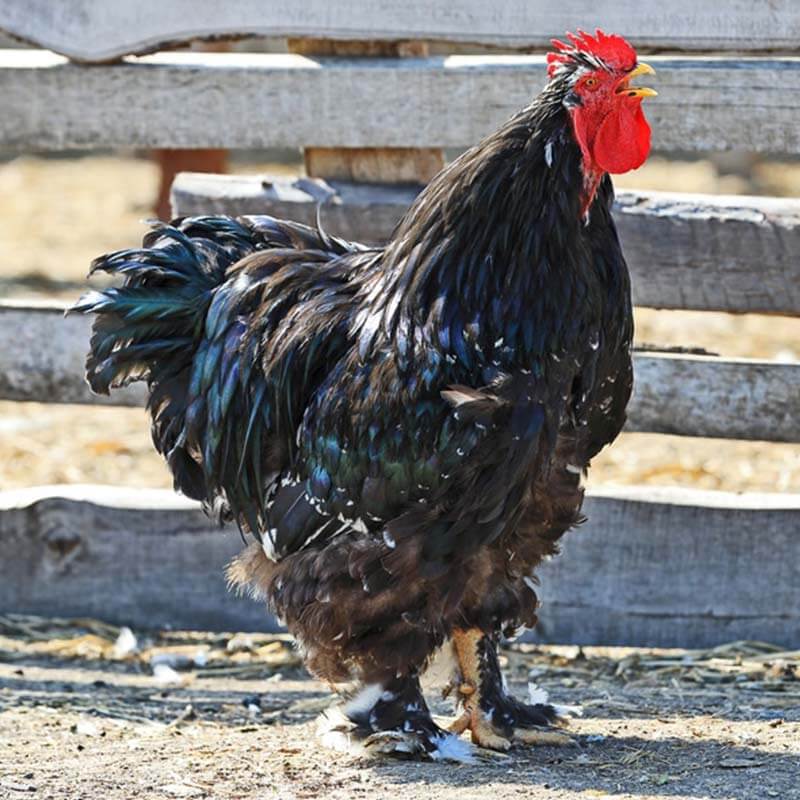
Sultan
The Sultan is a breed of chicken that originates in Turkey where they are known as Serai-Tavuk “fowls of the sultan”. They came to America in 1867 they are also one of the few birds with five toes. The Sultan is a large fowl with interesting feathers all the way down to the feet, they’re muffed, crested and bearded. They are also bred for competitive showing and are generally a rare sight.
Primary Use
The Sultan is used or ornamental purposes, lay few eggs.
Annual Egg Production
Less than 100
Egg Size
Small
Egg Color
White
Temperament
Docile, Friendly
Recognized Variety
White

Bielefelder Kennhuhn
The Bielefelder Kennhuhn is a German breed of domestic chicken. It was created by Gerd Roth around 1970 using selective breeding using Amrocks, Malines, New Hampshire and Rhode Island Red. Due to it many desirable characteristics it has gained the name “Uber Chicken”.
Primary Use
Dual Purpose – Meat & Eggs
Annual Egg Production
200
Egg Size
Large
Egg Color
Brown
Temperament
Friendly
Recognized Variety
New Hampshire, Cuckoo Malines, Amrock and Wydandotte
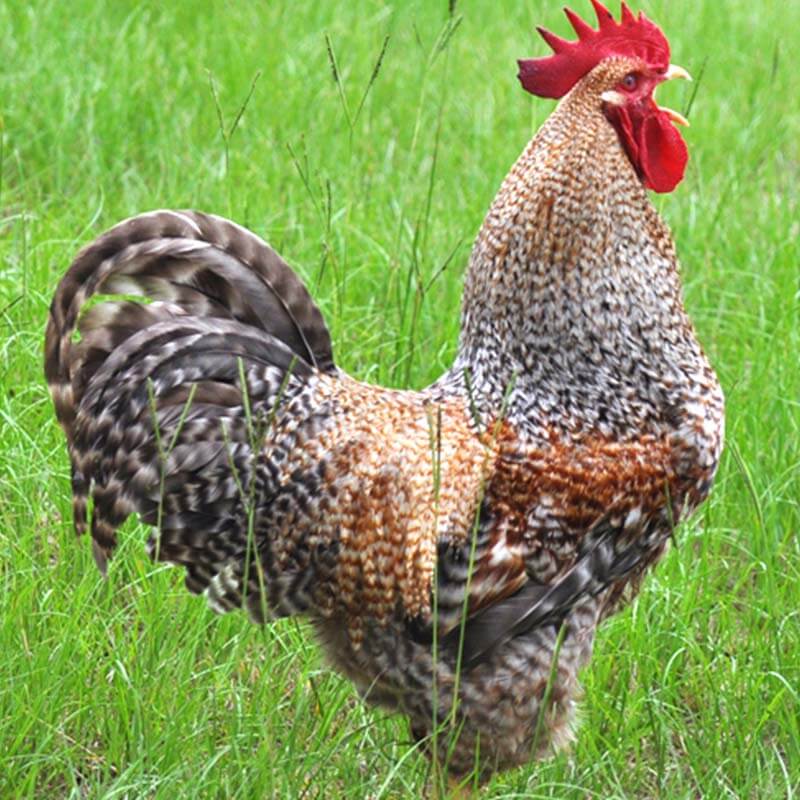
Phoenix
The Phoenix is a German breed of long-tailed chicken which is a result of European attempts to maintain the long tailed fowl. It derives from cross-breeding a small population of Japanese chickens similar to Onagadori. The Phoenix has been found in America since before 1924. They are fair but broody layers and the chicks are hardy and require extra protein for the tails growth.
Primary Use
Ornamental
Annual Egg Production
100
Egg Size
Medium
Egg Color
Golden, Silver
Temperament
Docile, Unfriendly
Recognized Variety
Black Breasted Red, Golden Duckwing, Silver Duckwing

Wydandotte
The Wydandotte Chicken developed in the 1870s in regions of New York and Canada. It was recognized by the APA in 1883. The Wydandotte was named after a Native America tribe, Wyandot that lived in the region. It has many color variants which makes it a popular show bird.
Primary Use
Dual Purpose – Meat & Eggs
Annual Egg Production
200
Egg Size
Large
Egg Color
Brown, Tan
Temperament
Docile
Recognized Variety
Barred, Black, Blue Laced Red, Buff etc.
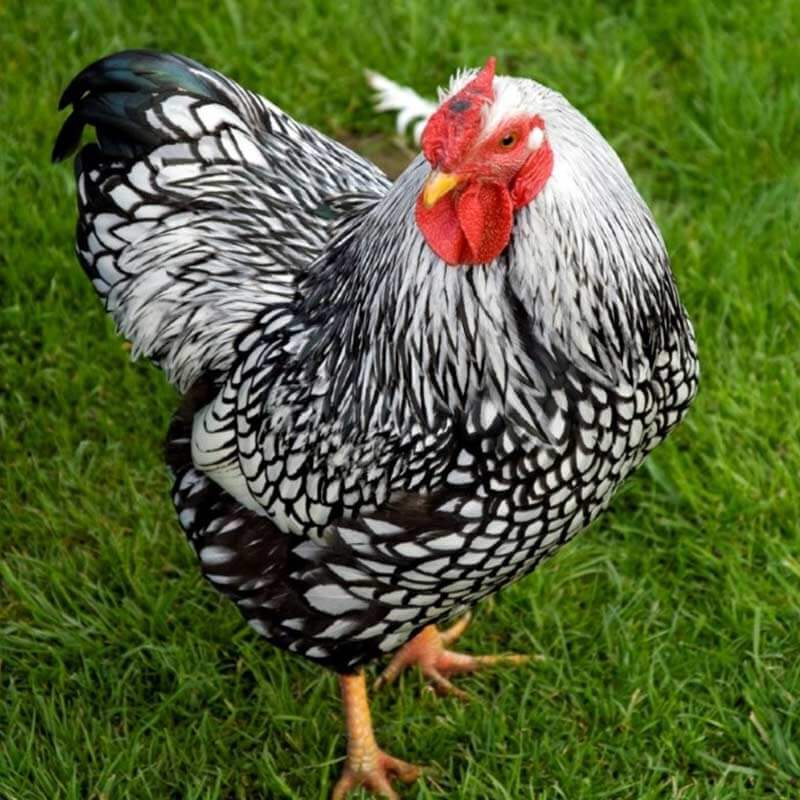
Welsummer or Welsumer
The Welsummer or Welsumer is a Dutch breed of domestic chicken. It is originally from a small village of Welsum, in the eastern Netherlands. Welsummers are known as “chocolate eggers” from the specked reddish-brown egg. They have a good constitution in the winter and have a single comb.
Primary Use
Dual Purpose and Ornamental
Annual Egg Production
200
Egg Size
Large
Egg Color
Dark Brown
Temperament
Friendly Intelligent
Recognized Variety
Gold Duckwing, Partdridge, Silver Duckling
